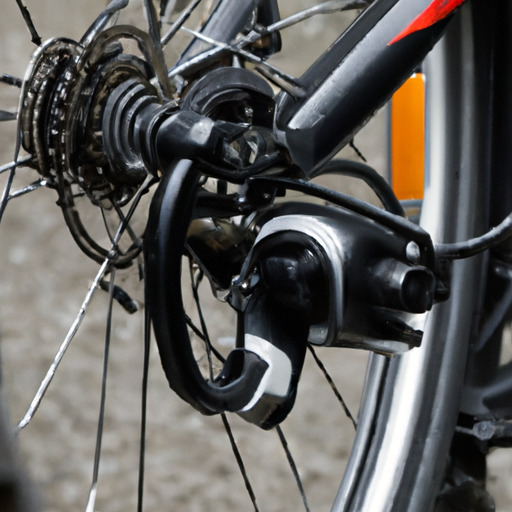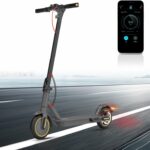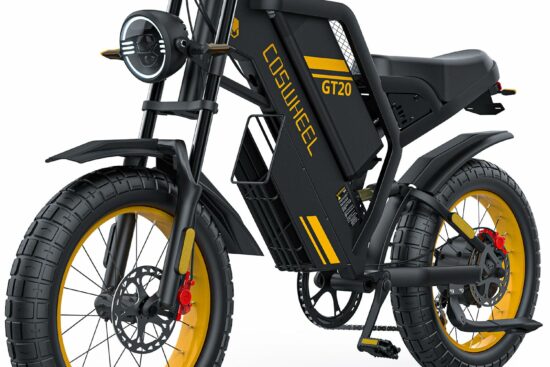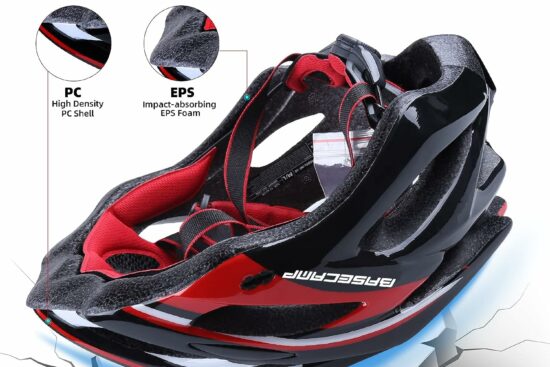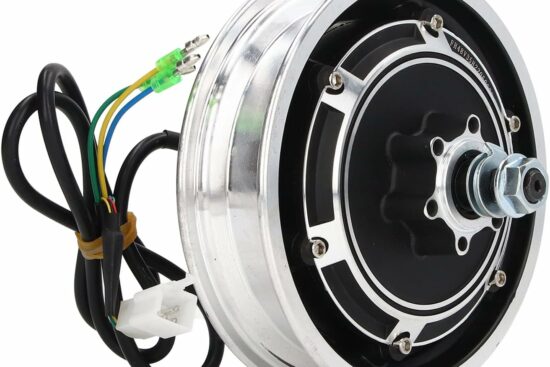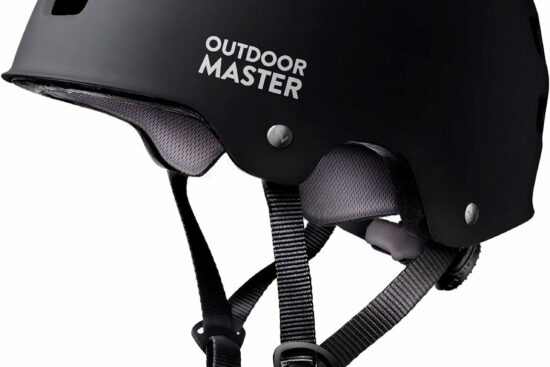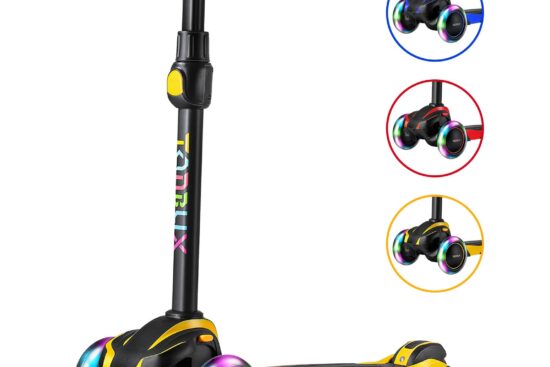
Are they all the same or are there different options to choose from? If you’re curious about the motors that power e-bikes, you’ve come to the right place. In this article, we’ll explore the different types of motors used in e-bikes and delve into their advantages and disadvantages, so you can make an informed decision when it comes to choosing your own e-bike.
If you’re interested in learning more about the different types of motors used in e-bikes, from hub motors to mid-drive motors, you’re in luck. In this article, we’ll break down the pros and cons of each type, and explain how they affect the performance and ride quality of the e-bike. Whether you’re a newbie to the world of e-bikes or an experienced rider looking to upgrade, understanding the different motor options available is key. So, let’s dive in and discover what powers these exciting electric rides!
Brushed Motors
Brushed motors are one of the most common types of motors used in e-bikes. These motors work based on the principle of electromagnetic induction. When an electric current is passed through the motor’s coils, it generates a magnetic field, which interacts with the permanent magnets inside the motor. This interaction creates a force that causes the motor to rotate.
Working Principle of Brushed Motors
In brushed motors, the rotor contains a permanent magnet, while the stator consists of a series of electromagnets. As the electric current flows through the coils of the stator, it creates a magnetic field that attracts or repels the permanent magnets on the rotor. This interaction causes the rotor to rotate, which in turn drives the e-bike forward.
Advantages of Brushed Motors
One of the main advantages of brushed motors is their simplicity. They have a relatively simple design, with fewer components compared to other types of motors. This simplicity makes them easier to manufacture and repair, resulting in lower costs for consumers.
Another advantage of brushed motors is their high starting torque. These motors are capable of delivering a lot of torque at low speeds, making them ideal for e-bikes that require a lot of power to start moving from a standstill.
Disadvantages of Brushed Motors
Despite their benefits, brushed motors also have some drawbacks. One significant disadvantage is the presence of brushes and commutators. These components create friction and wear over time, reducing the motor’s efficiency and lifespan. Additionally, the brushes and commutators can generate electrical noise, which can interfere with other electronic components in the e-bike.
Another disadvantage of brushed motors is their limited lifespan. The brushes and commutators need to be replaced periodically, which can be both time-consuming and costly. Additionally, the brushes can wear down over time, leading to decreased motor performance.
Applications of Brushed Motors
Brushed motors are commonly used in e-bikes, particularly in entry-level and budget-friendly models. They are also found in various other applications, such as power tools, electric toys, and small appliances. Their high starting torque and relatively low cost make them suitable for these applications.
Brushless Motors
Brushless motors, as the name suggests, do not have brushes and commutators like brushed motors. Instead, they use electronic controllers to control the motor’s operation. This makes them more efficient and reliable than brushed motors.
Working Principle of Brushless Motors
Brushless motors consist of a rotor with permanent magnets and a stator with electromagnets. The electronic controller sends electric currents to the stator to create a rotating magnetic field. This magnetic field interacts with the permanent magnets on the rotor, causing it to rotate.
Advantages of Brushless Motors
One of the main advantages of brushless motors is their higher efficiency. Since there are no brushes and commutators, there is less friction and wear, resulting in a more efficient motor. This increased efficiency translates to longer battery life and improved overall performance of the e-bike.
Another advantage of brushless motors is their longer lifespan. Without the brushes and commutators that wear down over time, these motors can last significantly longer than brushed motors. This means fewer maintenance and replacement costs for e-bike owners.
Disadvantages of Brushless Motors
Despite their benefits, brushless motors also have some disadvantages. One of the main drawbacks is their higher cost compared to brushed motors. The electronic controllers and more complex design contribute to the increased price of brushless motors.
Another disadvantage of brushless motors is their lower starting torque. While they are more efficient overall, they may not provide the same level of torque at low speeds as brushed motors. This can be problematic for e-bikes that need a lot of power to start moving from a standstill.
Applications of Brushless Motors
Brushless motors are commonly used in high-end e-bikes and electric vehicles. Their efficiency, reliability, and longer lifespan make them ideal for these applications. They are also found in various industrial and commercial applications that require high-performance motors.
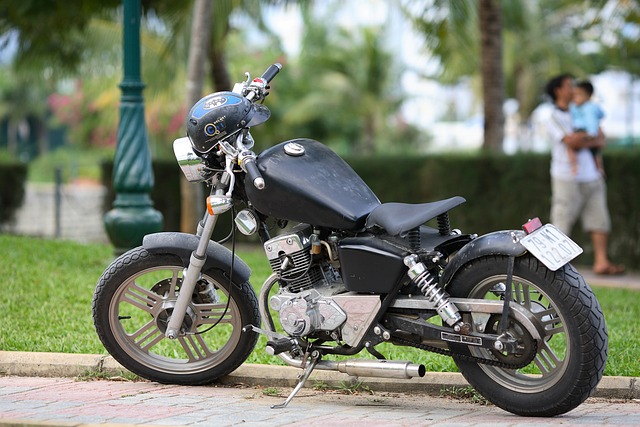
Hub Motors
Hub motors are another type of motor used in e-bikes. As the name suggests, these motors are integrated within the hub of the wheel. This positioning provides several advantages, including a more balanced weight distribution and simplified drivetrain.
Working Principle of Hub Motors
Hub motors can be either brushed or brushless, depending on the specific model. The motor is directly connected to the axle of the wheel, allowing it to drive the wheel directly. When electric current is applied to the motor, it generates a torque that rotates the wheel, propelling the e-bike forward.
Advantages of Hub Motors
One of the main advantages of hub motors is their simplicity. Since the motor is integrated within the wheel hub, there is no need for a separate drivetrain or transmission system. This simplifies the overall design of the e-bike and reduces the number of moving parts, resulting in a more reliable and low-maintenance system.
Another advantage of hub motors is their ability to provide direct drive. The motor torque is directly transferred to the wheel, eliminating any power loss that may occur in a drivetrain with gears and chains. This direct drive results in a more efficient and responsive e-bike.
Disadvantages of Hub Motors
Despite their benefits, hub motors also have some disadvantages. One significant drawback is the added weight to the wheel. Since the motor is integrated within the wheel hub, it adds additional weight to the wheel, which can affect the overall handling and performance of the e-bike.
Another disadvantage of hub motors is the lack of gearing options. Unlike other types of motors, hub motors do not have built-in gears. This means that the e-bike may not be able to reach high speeds or climb steep hills as efficiently as e-bikes with geared motors.
Applications of Hub Motors
Hub motors are commonly used in e-bikes that prioritize simplicity and reliability. They are particularly popular in urban commuting e-bikes, where the low maintenance and direct drive features are valued. Hub motors are also found in electric scooters and other small electric vehicles.
Mid-drive Motors
Mid-drive motors, also known as central motors, are positioned near the crankset or pedals of the e-bike. This location provides several advantages, including improved weight distribution and better overall handling.
Working Principle of Mid-drive Motors
Mid-drive motors are typically brushless motors that drive the crankset or pedals directly. This allows the motor’s torque to be transmitted through the drivetrain and gears, enabling the rider to shift gears and take advantage of the e-bike’s full range of speed and power.
Advantages of Mid-drive Motors
One of the main advantages of mid-drive motors is their ability to leverage the bike’s gears. By driving the crankset or pedals directly, the motor can take advantage of the e-bike’s gearing system. This allows for more efficient power delivery, particularly in situations that require climbing steep hills or achieving high speeds.
Another advantage of mid-drive motors is their better weight distribution. Since the motor is positioned near the center of the e-bike, it provides a more balanced distribution of weight between the front and rear wheels. This improves the overall handling and stability of the e-bike, especially during cornering and maneuvering.
Disadvantages of Mid-drive Motors
Despite their benefits, mid-drive motors also have some disadvantages. One significant drawback is their higher cost compared to hub motors. The more complex design and integration with the drivetrain make mid-drive motors more expensive to manufacture and maintain.
Another disadvantage of mid-drive motors is the additional wear and tear on the drivetrain components. The increased torque and power transmitted through the drivetrain can lead to faster wear on the chain, gears, and other components. Regular maintenance and replacement of these parts may be necessary to ensure optimal performance.
Applications of Mid-drive Motors
Mid-drive motors are commonly used in performance-oriented e-bikes, such as mountain bikes and road bikes. Their ability to leverage the bike’s gears and provide efficient power delivery makes them ideal for these applications. Mid-drive motors are also found in some high-end commuter e-bikes.
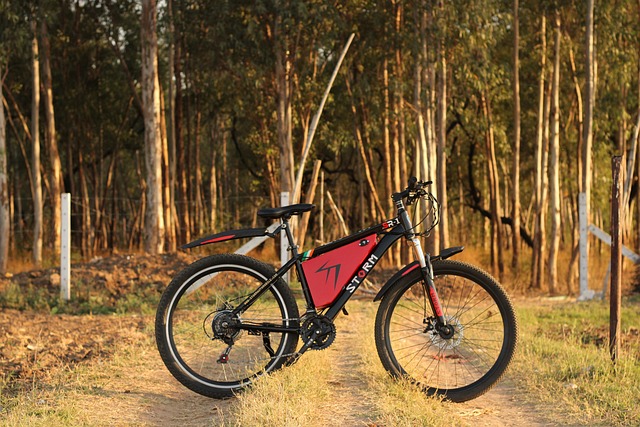
Direct Drive Motors
Direct drive motors, also known as gearless motors, are brushless hub motors that do not have any gears or mechanical components. This design offers several advantages, including a quiet operation and excellent torque.
Working Principle of Direct Drive Motors
Direct drive motors consist of a rotor with permanent magnets and a stator with electromagnets, similar to other brushless motors. However, unlike other types of motors, direct drive motors do not have any gears or mechanical components. This means that the rotor is directly connected to the wheel hub.
When the electric current is applied to the motor, it generates a magnetic field that interacts with the permanent magnets on the rotor, causing it to rotate. This direct drive configuration provides excellent torque and efficient power transfer to the wheels.
Advantages of Direct Drive Motors
One of the main advantages of direct drive motors is their high torque output. The absence of gears allows these motors to deliver a lot of torque, making them ideal for e-bikes that require extra power for climbing steep hills or carrying heavy loads.
Another advantage of direct drive motors is their quiet operation. Since there are no gears or mechanical components, there is no friction or noise generated during operation. This creates a smooth and quiet riding experience, which is particularly appreciated in urban areas or during nighttime rides.
Disadvantages of Direct Drive Motors
Despite their benefits, direct drive motors also have some disadvantages. One significant drawback is their weight. The absence of gears and mechanical components means that the motor needs to be larger and heavier to provide the required torque. This added weight can affect the overall performance and handling of the e-bike.
Another disadvantage of direct drive motors is their lower efficiency compared to geared motors. The direct drive configuration can lead to higher energy consumption, particularly at higher speeds. This can result in reduced range or shorter battery life for the e-bike.
Applications of Direct Drive Motors
Direct drive motors are commonly used in e-bikes that require high torque and smooth operation. They are particularly popular in cargo e-bikes and electric mopeds that need to carry heavy loads or provide a comfortable ride experience. Direct drive motors are also found in some high-end commuter e-bikes.
Geared Motors
Geared motors, also known as geared hub motors, combine the benefits of both direct drive motors and geared motors. They use a system of gears to increase torque and efficiency, while still maintaining a compact size.
Working Principle of Geared Motors
Geared motors consist of a brushless motor and a system of gears. The motor generates a rotating magnetic field that interacts with the permanent magnets on the rotor. However, instead of directly connecting the rotor to the wheel hub, the motor’s output is redirected through a series of gears.
These gears allow the motor to increase torque and provide better efficiency than direct drive motors. By using gears, the motor can effectively multiply the torque output, making it suitable for e-bikes that require extra power for climbing hills or carrying heavy loads.
Advantages of Geared Motors
One of the main advantages of geared motors is their ability to provide high torque output while maintaining a compact size. The gear system allows the motor to multiply its torque output, making it suitable for various applications, including e-bikes that require extra power.
Another advantage of geared motors is their improved efficiency compared to direct drive motors. The gears help to optimize the power transfer from the motor to the wheels, reducing energy consumption and increasing the overall range of the e-bike.
Disadvantages of Geared Motors
Despite their benefits, geared motors also have some disadvantages. One significant drawback is the added complexity compared to direct drive motors. The system of gears introduces more moving parts, increasing the chances of mechanical failures and requiring more maintenance.
Another disadvantage of geared motors is the potential for increased noise during operation. While not as loud as brushed motors, the gears can produce some noise during acceleration or high-speed riding. This may not be an issue for most riders, but some may prefer a quieter riding experience.
Applications of Geared Motors
Geared motors are commonly used in a wide range of e-bikes, from city commuters to mountain bikes. Their ability to provide high torque and improved efficiency makes them suitable for various riding conditions and requirements. Geared motors are also found in some electric scooters and small electric vehicles.

Torque Sensors
Torque sensors, although not motors themselves, play a crucial role in e-bikes. These sensors measure the amount of force applied by the rider and provide feedback to the motor to adjust its power output accordingly.
Working Principle of Torque Sensors
Torque sensors are usually located in the e-bike’s bottom bracket or pedal area. They measure the amount of force the rider applies to the pedals and transmit this information to the motor controller. Based on the torque reading, the motor controller adjusts the motor’s power output to provide the desired level of assistance.
Advantages of Torque Sensors
One of the main advantages of torque sensors is their ability to provide a natural and intuitive riding experience. By measuring the rider’s force directly, the motor can provide assistance that is proportional to the rider’s effort. This results in a more seamless and responsive ride, similar to riding a conventional bike.
Another advantage of torque sensors is their ability to conserve battery power. Since the motor output is adjusted based on the rider’s torque input, the motor only provides assistance when it is needed. This can extend the e-bike’s range and improve overall battery efficiency.
Disadvantages of Torque Sensors
Although torque sensors offer many benefits, they also have some disadvantages. One significant drawback is their higher cost compared to simpler cadence sensors or throttle-controlled systems. The additional technology and precision required for torque sensing increase the overall cost of the e-bike.
Another disadvantage of torque sensors is their complexity. The sensors and associated motor controllers require a more sophisticated setup, which can be challenging to install and maintain for some riders. Additionally, torque sensors may be more prone to wear and damage compared to simpler systems.
Applications of Torque Sensors
Torque sensors are commonly used in high-end e-bikes that prioritize a natural and intuitive riding experience. They are particularly popular in electric mountain bikes and road bikes, where riders require precise control and responsiveness. Torque sensors are also found in some mid-drive motor systems.
Crank Drive Systems
Crank drive systems, also known as mid-drive systems, are an integrated system that combines a mid-drive motor and torque sensor. This combination provides the rider with a natural and efficient riding experience.
Working Principle of Crank Drive Systems
Crank drive systems consist of a mid-drive motor that is integrated into the e-bike’s bottom bracket area. The system also includes a torque sensor that measures the rider’s force on the pedals. Based on the torque reading, the motor controller adjusts the motor’s power output to provide assistance that is proportional to the rider’s effort.
Advantages of Crank Drive Systems
One of the main advantages of crank drive systems is their ability to leverage the bike’s gearing system. By integrating the motor into the bottom bracket, the motor can drive the crankset directly, allowing it to take full advantage of the e-bike’s gears. This results in a more efficient power delivery and improved climbing abilities.
Another advantage of crank drive systems is their better weight distribution. By positioning the motor near the center of the e-bike, crank drive systems provide a more balanced weight distribution between the front and rear wheels. This enhances the overall handling and stability of the e-bike, particularly during cornering and maneuvering.
Disadvantages of Crank Drive Systems
Despite their benefits, crank drive systems also have some disadvantages. One significant drawback is their higher cost compared to other motor systems. The integration of the motor into the bottom bracket area, along with the torque sensor, increases the overall complexity and cost of the system.
Another disadvantage of crank drive systems is the additional wear and tear on the drivetrain components. The increased torque and power transmitted through the drivetrain can lead to faster wear on the chain, gears, and other components. Regular maintenance and replacement of these parts may be necessary to ensure optimal performance.
Applications of Crank Drive Systems
Crank drive systems are commonly used in high-end e-bikes that require a natural and efficient riding experience. They are particularly popular in electric mountain bikes and road bikes, where riders need precise control, efficient power delivery, and the ability to tackle challenging terrain. Crank drive systems are also found in some mid-drive motor systems.
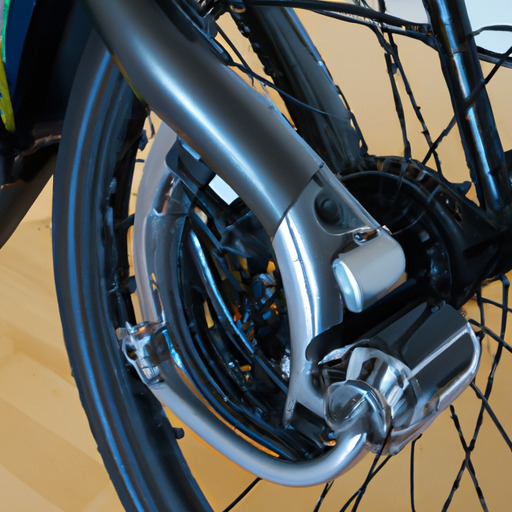
Friction Drive Systems
Friction drive systems, as the name suggests, use friction to transfer power from the motor to the e-bike’s wheel. These systems are relatively simple and lightweight, making them ideal for certain applications.
Working Principle of Friction Drive Systems
Friction drive systems consist of a motor that is positioned above the rear wheel of the e-bike. The motor’s power output is transferred to the wheel through a roller or other friction contact point. As the motor rotates, it creates friction with the wheel, causing it to rotate and propel the e-bike forward.
Advantages of Friction Drive Systems
One of the main advantages of friction drive systems is their simplicity. These systems have a relatively simple design, with fewer components compared to other motor systems. This simplicity makes them lightweight and easy to install and maintain.
Another advantage of friction drive systems is their versatility. Since the motor is positioned above the rear wheel, these systems can be easily added to existing bikes. This makes them a popular choice for e-bike conversion kits, where riders can transform their conventional bikes into e-bikes.
Disadvantages of Friction Drive Systems
Despite their benefits, friction drive systems also have some disadvantages. One significant drawback is their lower efficiency compared to other motor systems. The frictional contact between the motor and the wheel can result in energy loss, reducing the overall efficiency of the e-bike.
Another disadvantage of friction drive systems is their limited torque output. The friction contact point may not provide as much torque as other motor systems, making them less suitable for e-bikes that require high power or climbing abilities.
Applications of Friction Drive Systems
Friction drive systems are commonly used in e-bike conversion kits. They are particularly popular among riders who want to transform their existing bikes into e-bikes without modifying the frame or drivetrain. Friction drive systems are also found in some lightweight and portable e-bikes.
Conclusion
In conclusion, there are various types of motors used in e-bikes, each with its own advantages and disadvantages. Brushed motors, brushless motors, hub motors, mid-drive motors, direct drive motors, geared motors, and friction drive systems all offer unique features that cater to different e-bike needs and riding preferences.
Brushed motors, with their simplicity and high starting torque, are commonly found in entry-level e-bikes and other low-cost applications. Brushless motors, on the other hand, provide higher efficiency, longer lifespan, and are primarily used in high-end e-bikes and electric vehicles.
Hub motors simplify the design and drivetrain of e-bikes, providing direct drive and low maintenance advantages. Conversely, mid-drive motors leverage the bike’s gears and offer improved weight distribution, making them suitable for performance-oriented e-bikes.
Direct drive motors provide excellent torque and quiet operation but tend to be heavier and less efficient than geared motors. Geared motors combine the benefits of direct drive motors and geared systems, offering high torque and efficiency in a compact design.
Torque sensors, although not motors themselves, play a crucial role in e-bikes by providing a natural and efficient riding experience. Crank drive systems integrate mid-drive motors and torque sensors, allowing riders to take full advantage of their e-bike’s gearing system.
Friction drive systems, with their simplicity and versatility, are commonly used in e-bike conversion kits and lightweight e-bike designs.
When choosing the right motor for your e-bike, it is important to consider your specific riding needs, budget, and preferences. Factors such as power output, torque, efficiency, weight, and cost should all be taken into account.
As technology continues to advance, we can expect to see further improvements and innovations in e-bike motors. The future of e-bike motors is likely to focus on increased efficiency, higher power outputs, and enhanced integration with other components of the e-bike system.
In conclusion, understanding the different types of motors used in e-bikes allows you to make an informed decision when selecting the right e-bike for your needs. Whether you prioritize power, efficiency, simplicity, or versatility, there is a motor type that suits your preferences and riding style.
